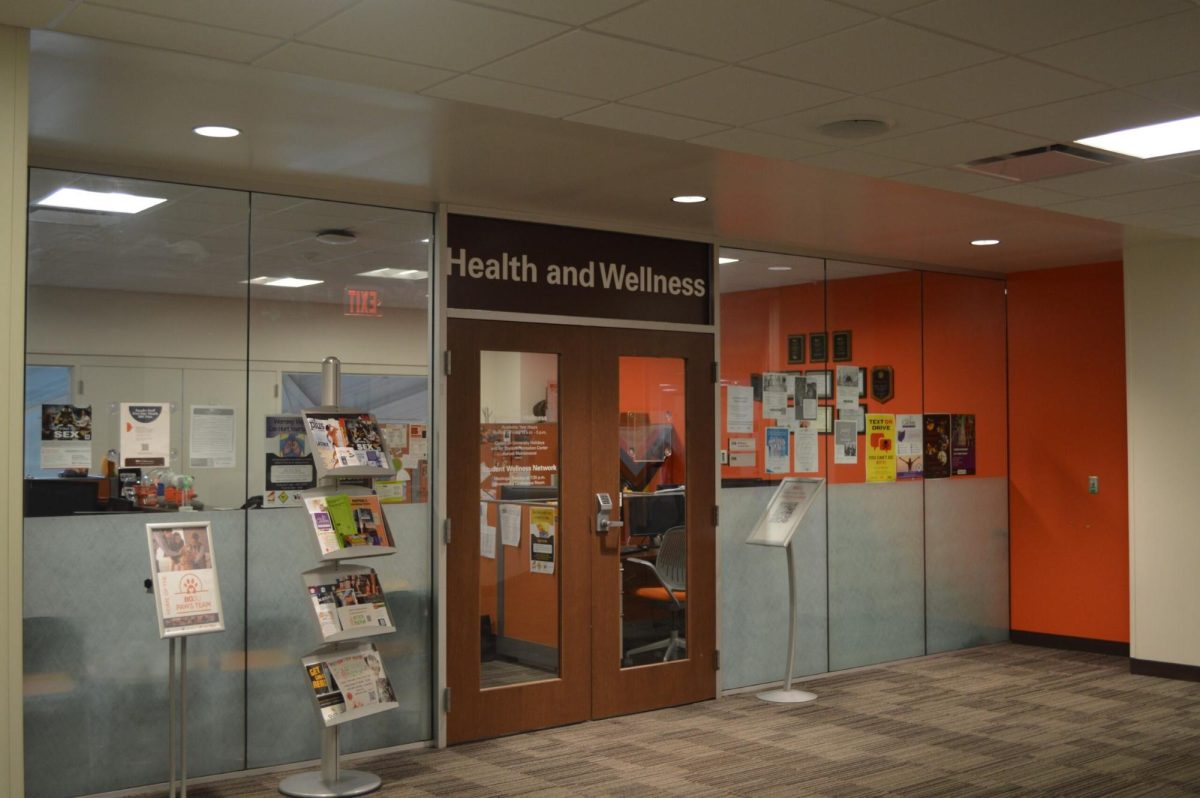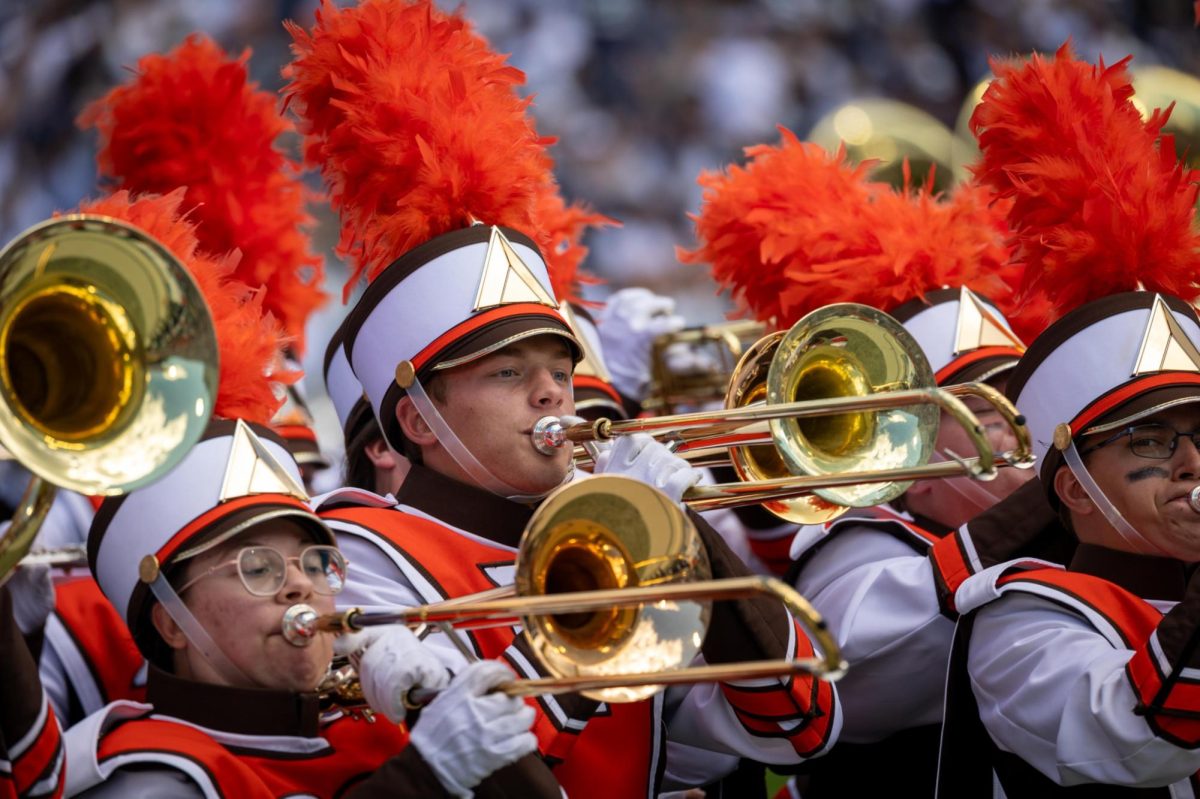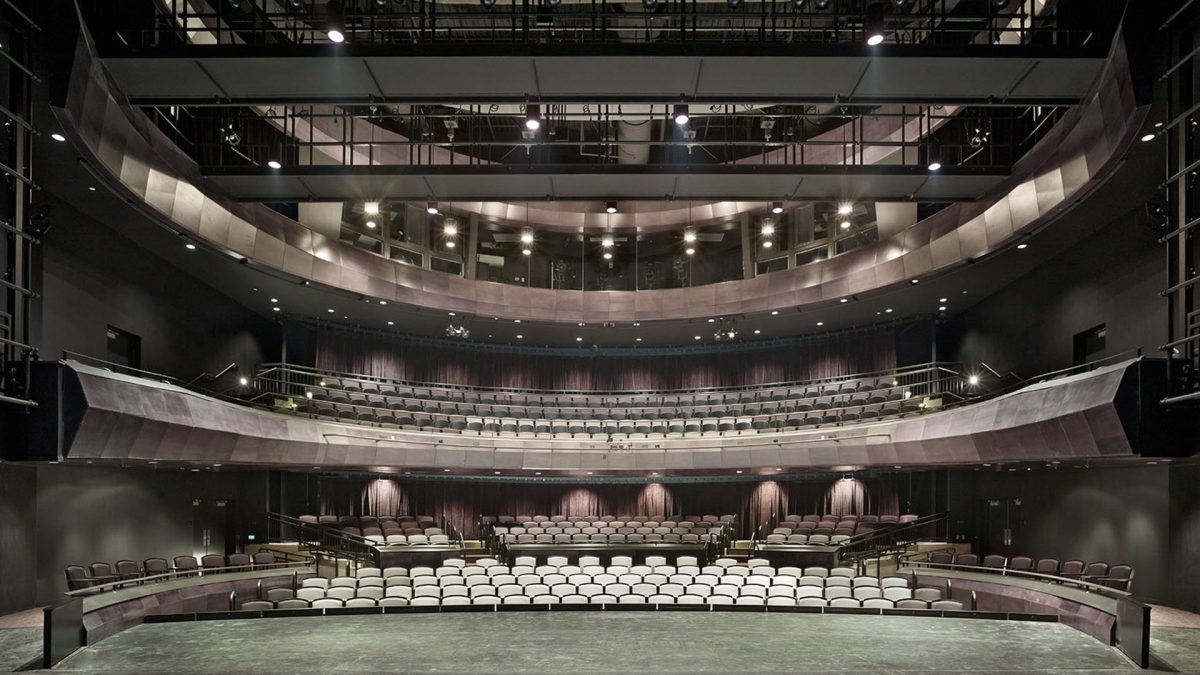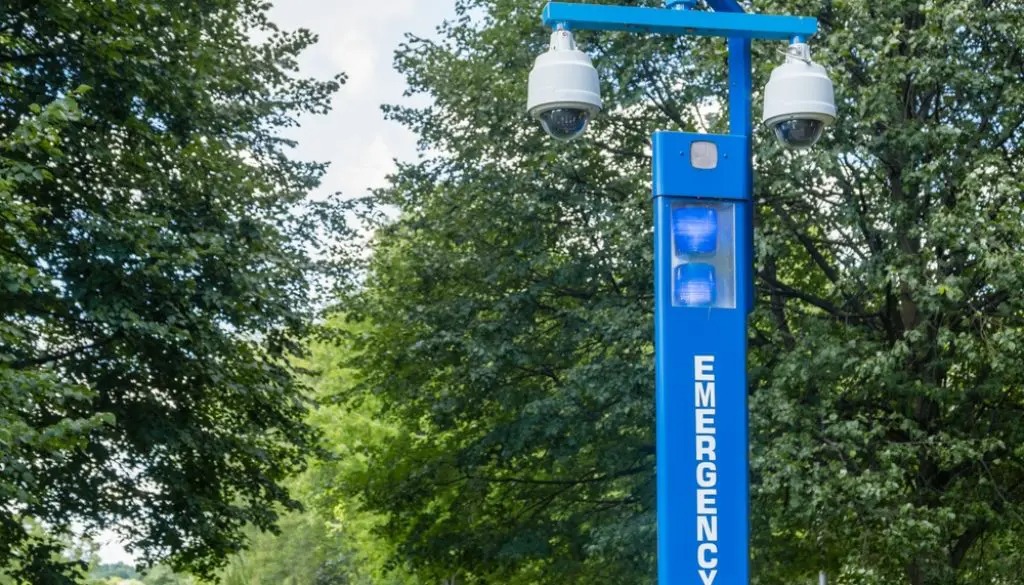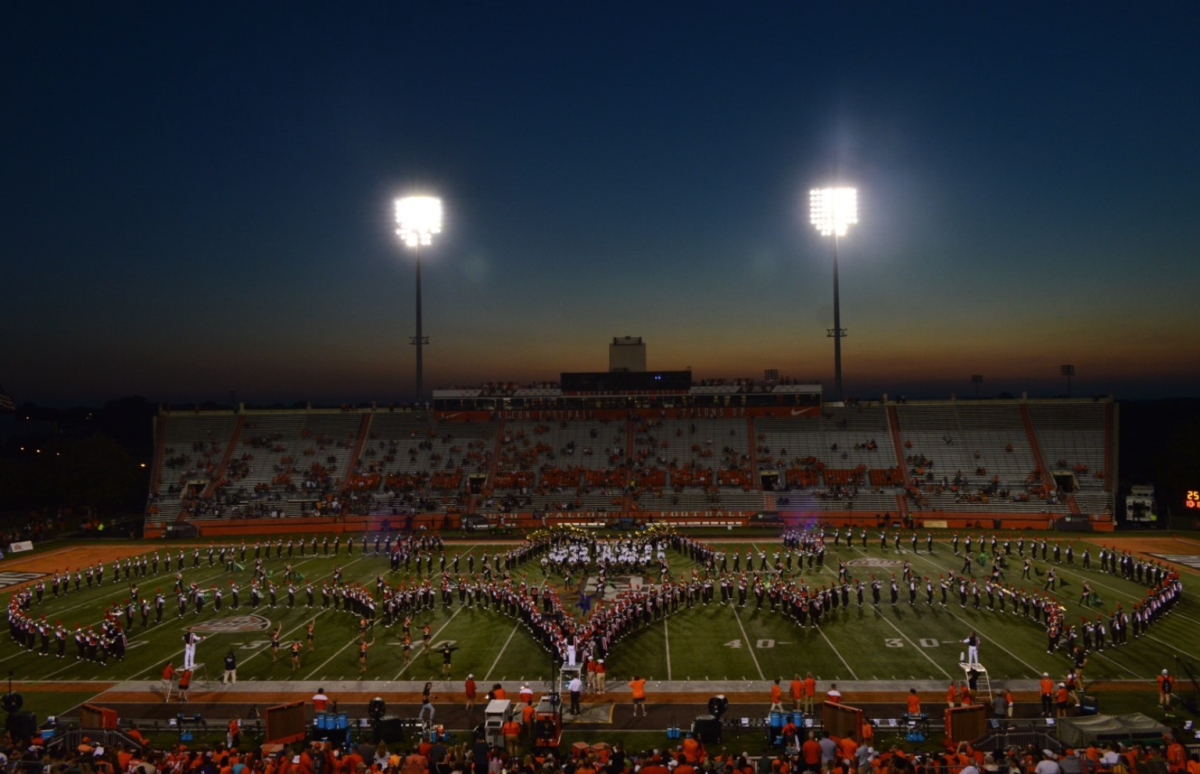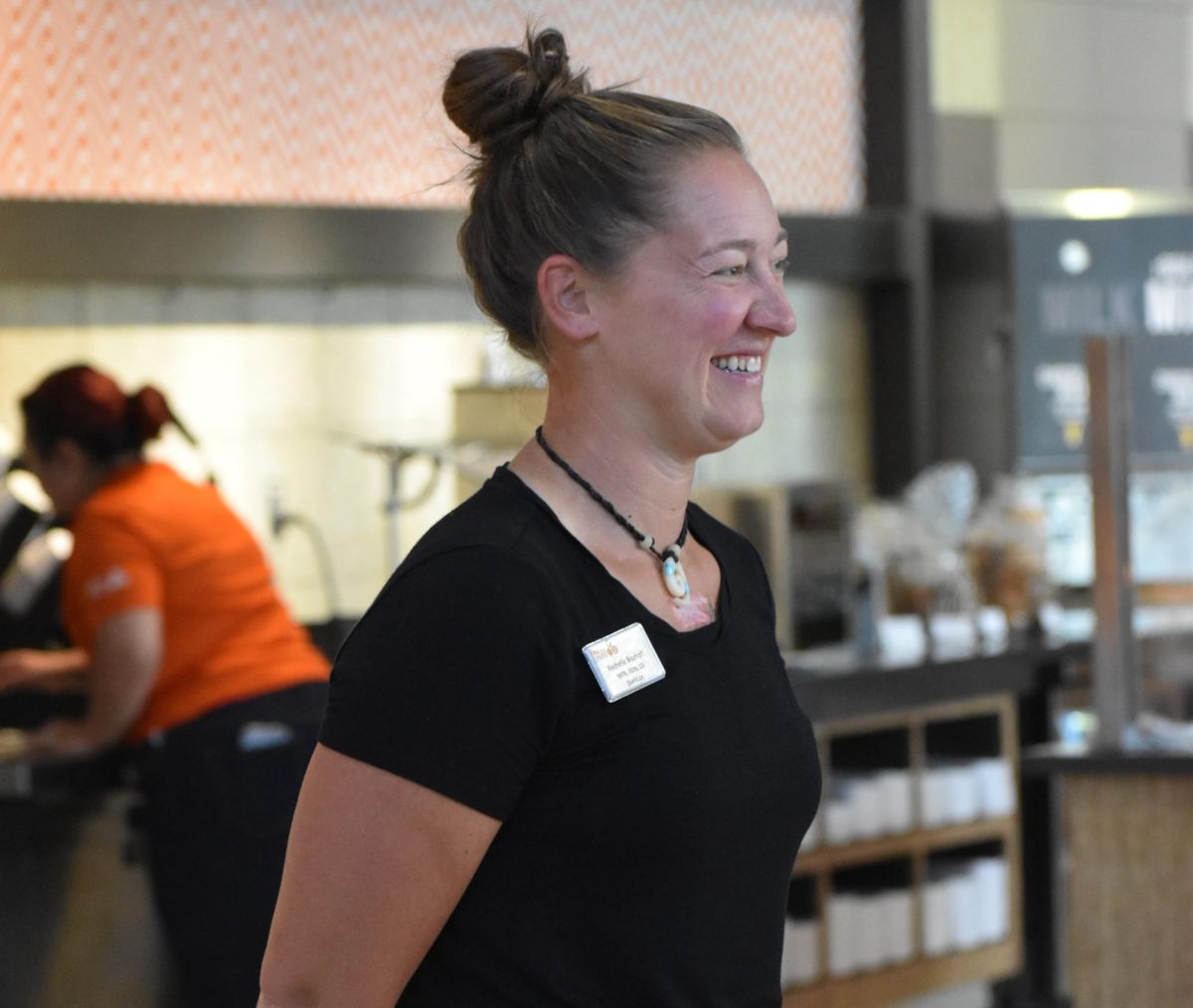Empty stomach or empty wallet: The financial food fight on campus

BOWLING GREEN, Ohio- When Isabella Zeng, an economics professor at BGSU, went to purchase a salad on campus, she was shocked to see that it was around $13.
Zeng, who works in the Maurer Business Center at BGSU, has direct access to both a campus market and a Starbucks on the first floor of her building
She explained that there are likely a lot of factors that contribute to the high prices on campus, but that even so, the prices of food can feel unattainable, even for professors like her who typically make more than college students.
“I do agree that the price gap was a little ridiculous, [but] I don’t know what we can do about that,” Zeng explained.
And salads aren’t the only pricey food on campus.
At BGSU in fall of 2023, the price for a cup of grapes at one of the university’s markets is $4 – only 30 cents cheaper than the price of a pound of grapes from the local Meijer.
Another salad, this one a pre-made kit, can be purchased from BGSU’s market for $7.49. A similar salad is sold at Meijer for $3.89.
In addition to price increases on individual food items, on-campus meal plans have also continued to get more expensive, with some plans seeing over a $200 increase since 2021.
With the rising cost of food on campus and marketing from BGSU’s administration that presents the university as an affordable place to go to college, students say they’re unable to make ends meet and keep food on the table.
BGSU’s Director of Marketing, Communications and Techncology for Chartwell Catering, Jon Zachrich explained why BGSU’s prices are higher, and how BGSU strives to keep meals affordable.

Chartwell Catering manages BGSU Dining, and Zachrich said that the reason Falcons are paying more for food on campus is what’s called a “catering tax.”
Zachrich explained that catering tax leads to higher food costs, as that tax is different from the taxes that customers pay at stores like Kroger and Meijer.
Grocery store taxes are cheaper because vendors want their products to be in their stores, and have to compete between franchises to get their products in and accepted by each grocery store chain.
“Walmart, Kroger, a lot of grocery stores..they can sell pretty much everything cheaper than we can. Not because of inflation but because of their purchasing power… When Kroger makes a deal with a produce company, they’re able to guarantee that they’re going to be using the produce for 20 different stores, so they can make a better price than we can,” Zachrich explained.
Zachrich and Zeng both explained that grocery stores have more of an ability to choose from vendors to supply food, and explained that if the tax for grapes is too high from one vendor, it’s likely that the store will find a different vendor that’s cheaper.
At BGSU, Zachrich said the tax situation is more similar to that of a gas station.
BGSU and vendors both know that students are more likely to eat at on-campus dining halls, markets and venues because they are more accessible to students who live on campus. Students living in dorms don’t have access to kitchens or much food storage, so vendors are able to charge more for what they sell because they know students will buy their products, no matter what.
Zachrich said that Chartwell Catering, BGSU Dining’s Catering service, goes above and beyond to keep prices affordable for students. Zachrich explained that BGSU has a larger say in the final cost of food on campus, but that his team works hard to plan for inflation so it doesn’t affect students as hard.
“We do our best in the long term to keep that [inflation] not as much of a concern for students because of how we plan our menus… We build in for the fact based on data that we get. [For example,] inflation could be as much as 5% this year, we’ll build that into the pricing model for the entire year to make sure we aren’t surprising students, ” Zachrich said.
Zeng, the economics professor who said she was shocked at the price of an on-campus salad, said it’s true that BGSU does have to pay significantly more for their food due to catering taxes. However, she feels the prices of campus food are still unaffordable for BGSU students and staff.
Beyond the pricing, Zeng said that there is reasoning behind what makes the pricing on campus so high, and that it can’t just be based on supply and demand.
“It all depends on how controlled is the campus pricing and how controlled is the union market. (Referring to price jumps on campus,) if it really was just supply and demand, you would think that eventually it would even out, but it’s really not just about supply and demand,” Zeng said.

It’s not only faculty who are struggling with the pricing on campus.
Antonio Villarreal, a BGSU sophomore has $5 in Falcon Dollars and five swipes left to get him through the last two weeks of the semester in fall 2023.
For food, Villarreal said he depends on his friends to swipe him into on-campus dining halls and for his parents to send care packages through the mail in order to eat.
“Sometimes I’ll take food from home. I’ll grab some bagels or a P3 and eat those,” Villarreal said.
Villareal said that it was a combination of him going to the dining hall too much, and the prices on campus that made it harder for him to eat this semester.
“I think the swipes (spending them) is kinda on me, but I think them raising the prices of a lot of the stuff is a BGSU thing… Like True Burger last year did not cost almost $20 to get a burger and a drink…I think I’m paying $15-16 bucks to eat there now,” Villarreal said.
Students like Villarreal are required to live on campus for two years and with their housing, are required to have a meal plan. Villareal and others currently living in dorm rooms on BGSU campuses also have limited space to store groceries–something Villarreal said also contributes to him not having the ability to store food.
Villarreal has BGSU’s bronze meal plan and explained that it has been hard to gauge what meals he can or can’t afford.
Last year, when Villarreal said he would spend weekends at home, his bronze plan was sufficient. Now, himself and his friends struggle on that same plan.
“This year the bronze plan has not been fine…My roommate- we have maybe a combined $20 Falcon Dollars in our room right now. Maybe 20 swipes. We’re both very broke on food right now,” Villareal said.
This year, Villarreal says he’s had to go hungry.
Gretchen Troxell, a BGSU junior, said that she has also struggled with getting food this semester on campus, and relies on her friends to eat.
“I used to be able to get a small meal and a smoothie from Jamba, and if I wanted to do that now, it’d be about $15-20. I’m constantly worrying about how much money I have,” Troxell said.
Troxell said that she purchased extra Falcon Dollars to help her buy food for when she was on campus. Since she spends the majority of her time on-site through classes and her on-campus job- she said that if she doesn’t eat on campus, she may not eat at all.
“I’ve been relying on my friends to get me into dining halls and pay for my food at the union. I’ve never struggled this much in the past, but right now I can’t even afford a drink with every meal.” Troxell explained.
The Union renovations add University pride to its design in addition to new dining options in the revamped Falcon’s Nest.
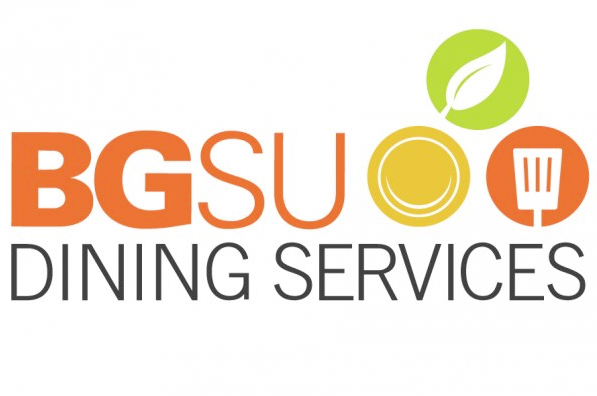
It’s not just Villarreal who isn’t able to make his meal plan work. In fact, no meal plan provides 3 meals a day for a full semester, and just one provides the ability to have 2 meals a day.
During a 15-week semester, students would eat 315 meals if they eat three meals per day, or 210 meals per semester if they eat two meals per day.
According to Zachrich, The average meal at the Falcon’s Nest in the Bowen Thompson Student Union or dining halls would cost $10-13.
The bronze meal plan includes $800 Falcon Dollars and 85 swipes that can be used on campus. This allows students to eat roughly 146 meals per semester on campus.
The silver meal plan includes $900 Falcon Dollars and 110 swipes, allowing students to eat roughly 179 meals per semester on campus.
The gold meal plan includes $1,000 Falcon Dollars and 135 swipes, allowing students to eat roughly 212 meals per semester on campus.
The gold plan is the only plan that could, in theory, sustain a two meal-a-day diet.
Zachrich explained that the reason BG Dining doesn’t provide a meal plan that could sustain a 3 day diet, is to help cut costs.
“Students have various eating habits and living scenarios, so we provide flexibility. We also know many students don’t eat three meals a day with BGSU Dining for various reasons, and we do our best to keep meal plan costs down by building plans into the Gold, Silver, and Bronze categories,” he said.
For students that are unsure of what plan would work best for them, Zachrich recommends taking the MyMeals survey, which helps identify students where they’re at.
Students become more susceptible to food insecurity when they’re unable to eat consistent meals or are unable to afford them.
According to the United States Department of Agriculture, food insecurity is the limited or uncertain availability of nutritionally adequate and safe foods, or the limited or uncertain ability to get food in a socially acceptable way.
Kayla Commings, a former Applied Health Science major at BGSU, examined food insecurity on campus in a paper called ‘Recommendations to Fill the Gaps’.
Commings explained that in a study conducted in 2018 around 42% of BGSU students are reportedly food insecure.
49% of participants were reported saying that they couldn’t afford food to maintain a healthy diet consistently.
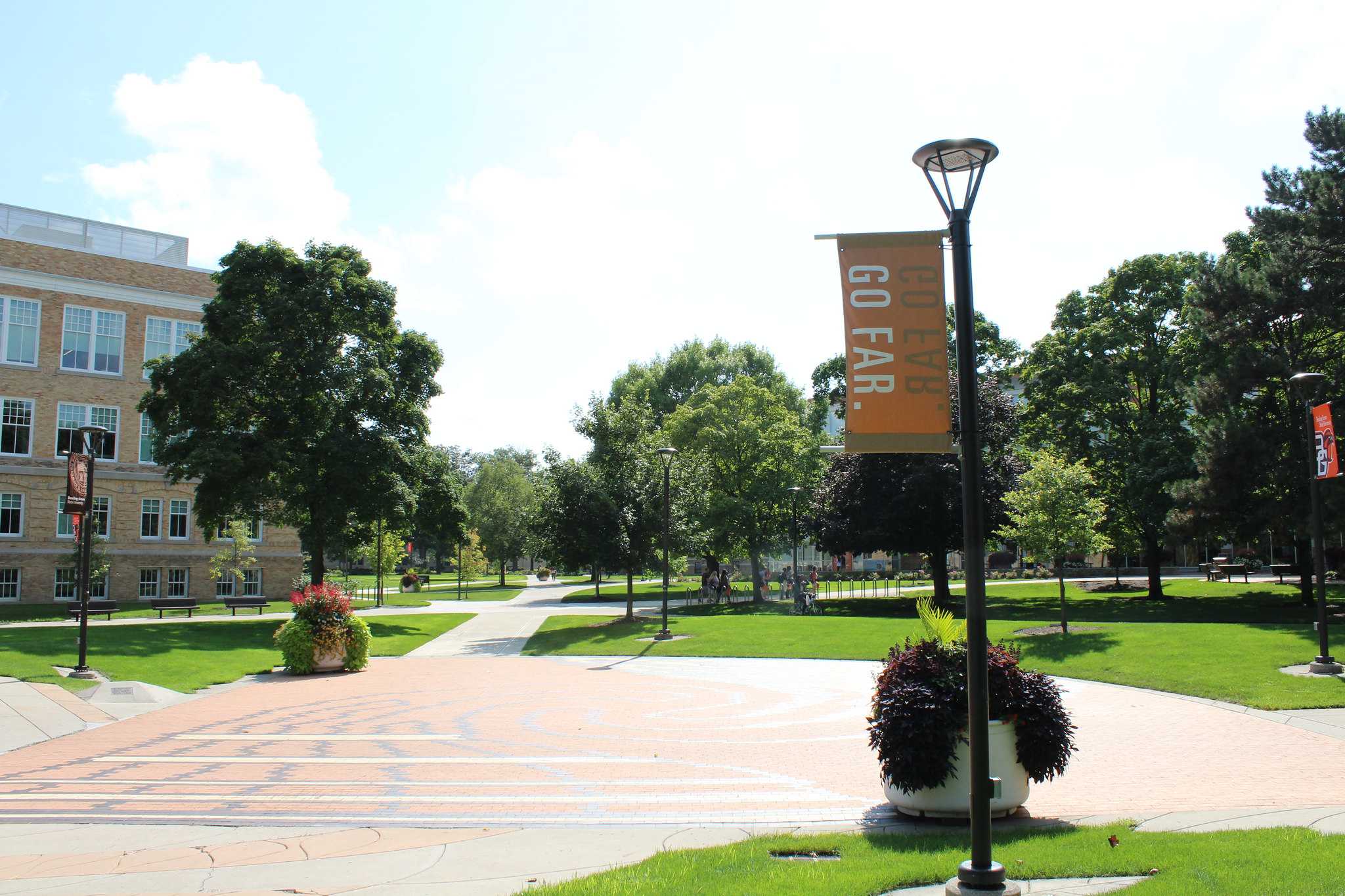
BGSU’s meals plan range relatively average for the state of Ohio, despite students feeling the plans are expensive . Here are some local schools meal plans in comparison to BGSU according to data from their websites.
BGSU:
Cheapest plan: $2,023
Most expensive plan: $2,612
University of Toledo:
Cheapest Pan: $1,758
Most expensive plan: $2,450
Ohio State University:
Cheapest plan: $2,237
Most expensive plan: $2,730
Ohio University:
Cheapest plan: $2,462
Most expensive plan: $3,740
Despite food prices rising on campus, there are other options available for students and staff struggling financially or with access to food.
These resources include things like Donated swipes, food pick-up bags, and local food pantries.
One of the largest resources that BGSU has is the Falcon Food Pantry, a food pantry on campus that’s open for all BGSU students, faculty, and staff.

The FFP has everything from disposable foods, to fresh dairy, specific cultural foods, hygiene products and diapers.
The pantry is open for the BGSU community Monday and Thursdays from 12-3, and Wednesdays 2:30-5:30, and the only thing that is needed to shop is a BGSU ID.
Ashley Alvarez, the graduate coordinator for the organization, says that the FFP is here for all students and staff on campus – despite your financial status.
“It’s very community based and just making everyone feel comfortable and making it feel less like a charity and more like a welcoming and inviting space… This [the resources] is just free…” said Ashley Alvarez.
The pantry is meant to hold nutritious and accessible food on campus, and allow for faculty and staff to have access to the resources they need without breaking the bank.
Alvarez says that she sees a variety of people that utilize the food bank. It can range from professors to grad students to students living in dorms. Alvarez explained that the largest demographic of people that they serve are international students and students that live in dorms.
Alvarez added that there are approximately 1-2 thousand students that come a semester.
Alvarez says that the FFP is more than just a food pantry, and that it offers many resources for students on campus- especially towards the end of semesters on campus.
“With these meal swipes and things, they’ve been ending, and (students) they still have school and they are still starving…We’ve had them come in and (we are) listening to what they’re saying,” Alvarez said.
Beyond the in-person store, the food pantry also offers packed-bag pickup at the Jerome LIbrary at the front desk, no questions asked.
The bags at the library are pre-packaged and won’t have dairy products, but have food essentials to help students get through the week.
The FFP is also planning to introduce a new online ordering aspect of shopping to be unveiled for the Spring 2024 semester.
“You will be able to pick up bags from the library and it’s the exact same things that we have…But if you happen to not be able to come in the hours that we do or you don’t feel comfortable coming in person, you could have pickup at the library and you just give them your name and they give you your bag,” said Alvarez.
The FFP covers the grocery aspect for students, but the Falcon Care Program introduces a way for students to access food on campus, through the campus dining halls.
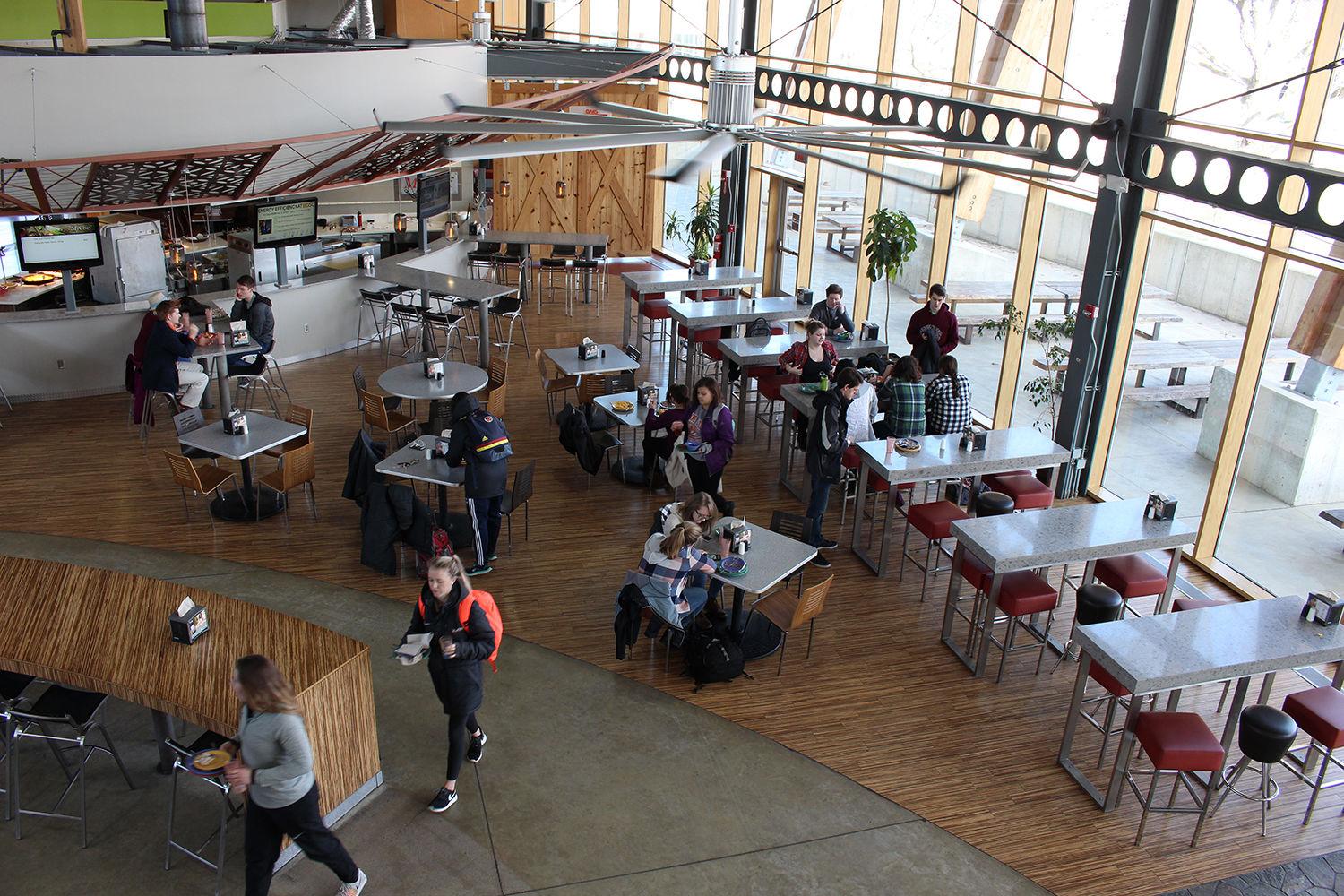
BGSU introduced the Falcon Care Program (FCP) in 2014, to help aid food insecurity on campus.
The program isn’t meant to be as long-term and sustainable as the FFP, but is meant to provide students that need immediate meals.
The program gives students a limited meal card that can be used for on-campus dining halls, however, all the swipes on that card are donated to students from other students.
Students on campus are also able to give back by donating their excess food swipes throughout the semester, and eligible students receive a Falcon Care Card that they can use at campus dining halls.
Through the FCP, students are able to donate up to 3 swipes a week by filling out a form on the BGSU website.
Both the Falcon Food Pantry and Falcon Care Program can be accessed through different offices on campus for students throughout the academic school year.
Your donation will support the student journalists of Bowling Green State University. Your contribution will allow us to purchase equipment and cover our annual website hosting costs.






